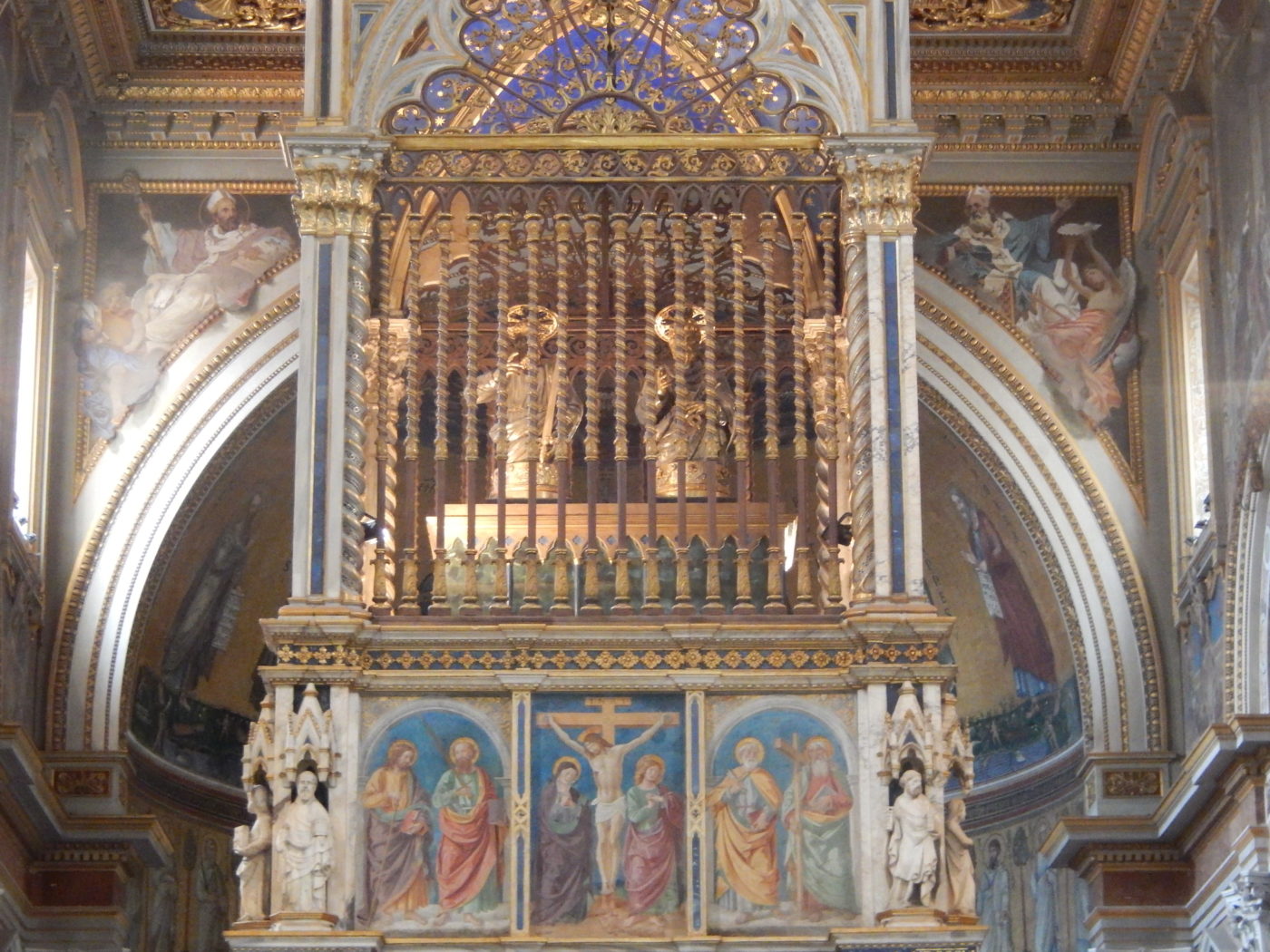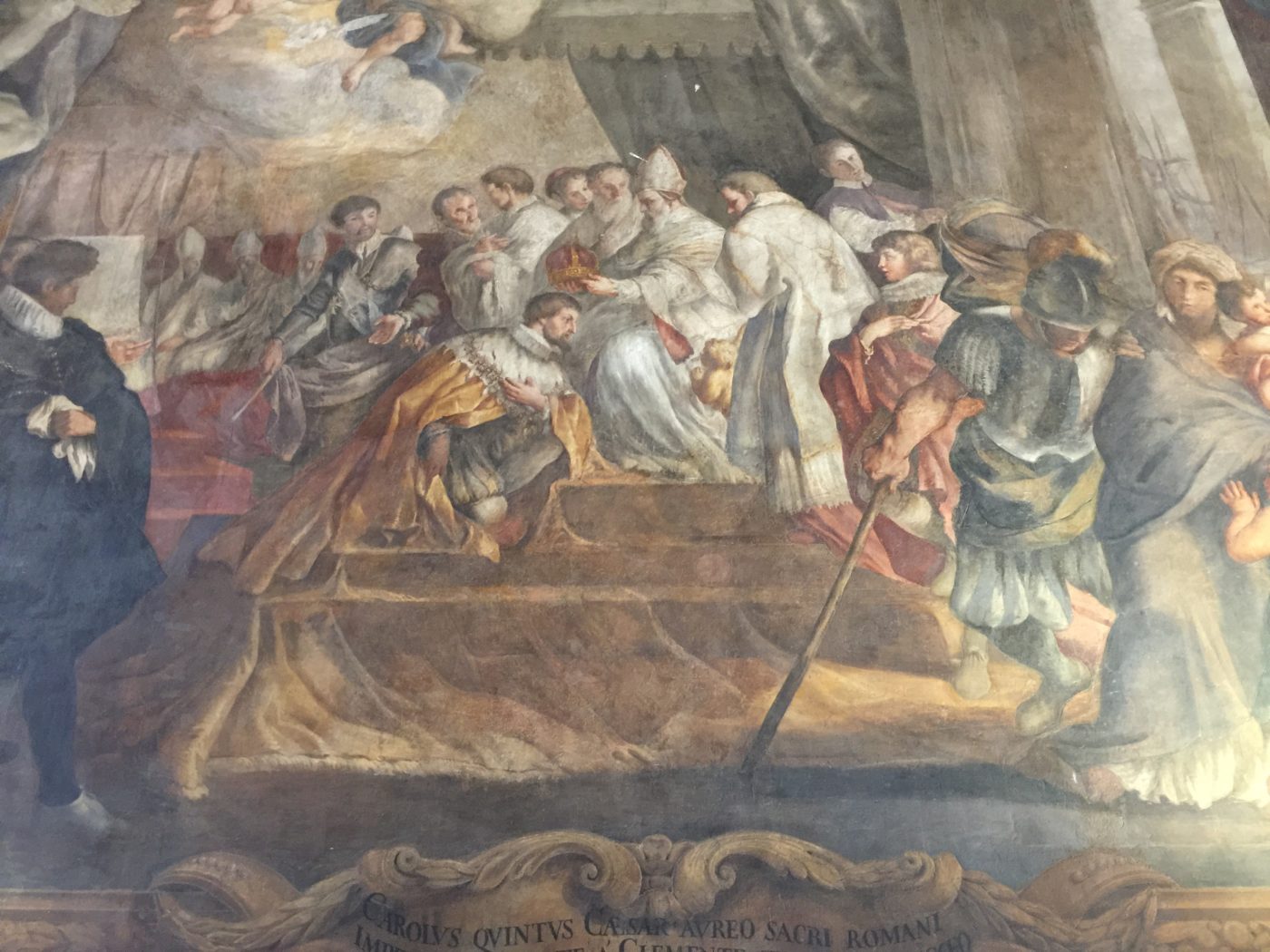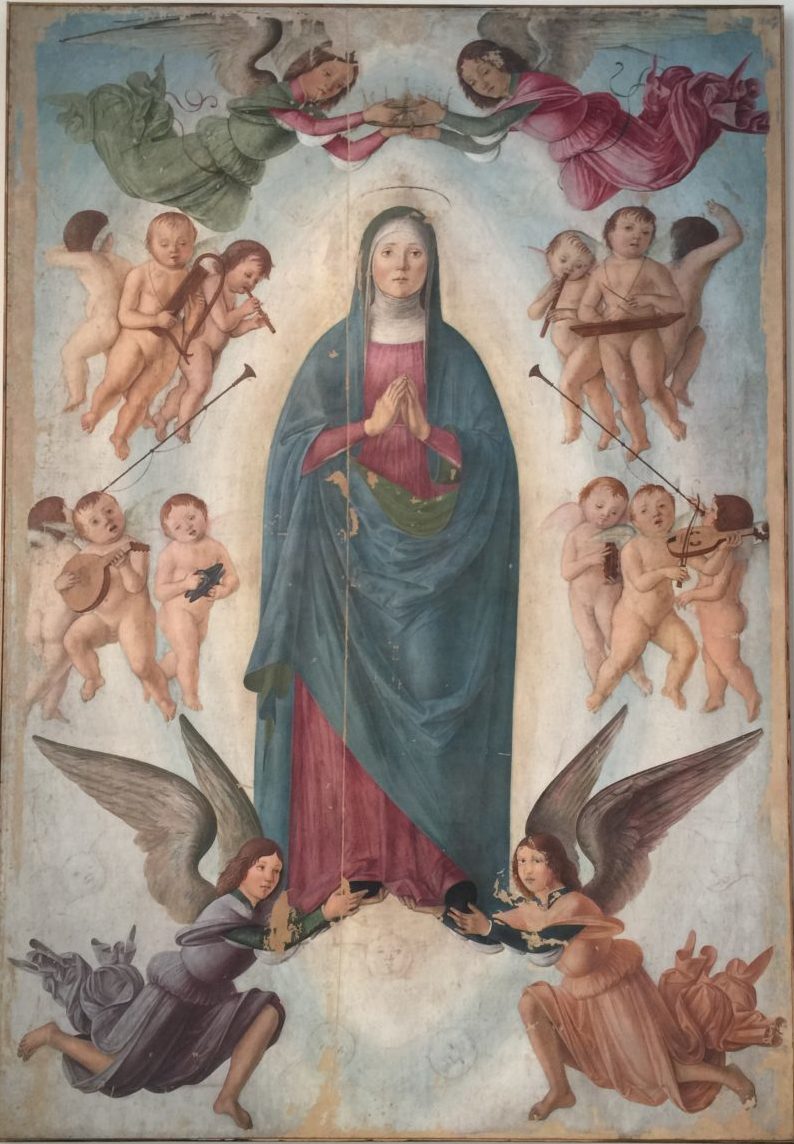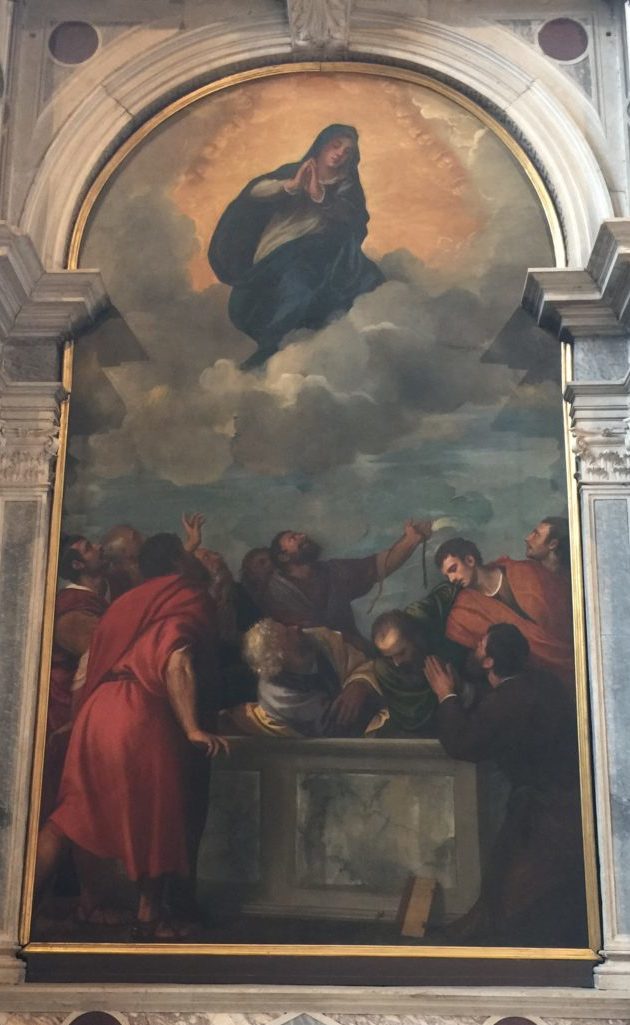
With the fall of the Roman Empire, political unity on the Italian Peninsula disappeared until Italy finally became a nation in 1870. In between these times, one of the most powerful influences, politically and economically, was the Papacy in Rome. Sometimes it was a moral influence and sometimes it wasn’t. But it was a constant presence and a growing power in the divided peninsula.
Until Constantine’s Edict of Milan, (313 CE), Rome’s Christians were tolerated, at best, and persecuted brutally, at worst. While scholars disagree, there is a tradition that Emperor Nero had St. Peter crucified upside down in 65 CE, and had St. Paul beheaded in 67 CE. You will find both heads in an elaborate reliquary hanging from the ceiling of the Archbasilica of San Giovanni in Laterano, the official cathedral of the Pope as bishop of Rome.
The Christians persevered and, with Constantine’s support and beneficence, the church grew stronger. See History of the Church from the Edict of Milan, D. 313, to the Council of Chalcedon, a D. 451 (Classic Reprint). Constantine and his mother, Helena, (shown above), were the driving force for the ascendance of Christianity as the “official” religion. Some scholars believe Constantine saw himself as God’s appointed ruler on earth.

After Pepin the Short’s “Donation” created the Papal States, it was Charlemagne, in 800 CE that actually stepped forward to protect the Pope and his sovereignty over the selected territories. For this, he was crowned Holy Roman Emperor. Finally, the Church had territory and protection.
For the next 1070 years, the map of Europe changed incessantly due to war, alliances, royal inbreeding and inter-marriage. Outside of the Papal States, the rest of Italy was generally a bunch of rival city states, vulnerable to more powerful aggressors. They generally squabbled amongst themselves.
Unfortunately, Charles VIII of France waltzed his army all the way to Naples to claim the Southern Italian throne in 1495, shining a light on the disorganized political landscape of Italy. The Italians, with the support of France’s enemies, challenged Charles to leave and joined battle at Fornovo. The military result was a sort of lame stalemate. Charles left in a huff. However, the northern European powers could see how fractured the Italian defenses were and proceeded to spend the next fifty years invading Italy, one after the other. Fornovo is another of the devastating battles in Italy’s Hall of Shame. This is dramatically explained in Italians, by Luigi Barzini, one of my highest rated recommendations.
Through it all, aside from 67 years in Avignon, (because the French pope didn’t dare to live in Italy), the Papacy was anchored in Rome. It gained more members and it collected more contributions. Noted historian, Eamon Duffy, chronicles the accomplishments of these pontiffs in Saints and Sinners: A History of the Popes; Third Edition (Yale Nota Bene).

As Christianity spread through Europe, it was very important to keep communicating the lessons and messages of the church. At the same time, the physical presence of the Church, in its cathedrals and parish churches needed to be as inspiring and intimidating as possible. For these purposes, the various popes turned to the artists, architects and, after the printing press was invented in 1450 CE, the writers of successive generations.
Art flourishes when there is wealth to support it, and the Church was the primary source of artistic patronage for a thousand years. In Rome, and throughout Europe, some of the most impressive artistic achievements of man were accomplished to decorate some church. The most important church with the best decorations was St. Peter’s Basilica, built, in theory, over the site of St. Peter’s tomb. (Bones of St. Peter)
The term “renaissance” is a French term meaning rebirth. In the case of the Italian Renaissance period of the 15th and 16th centuries, the rebirth refers to classical Greece and its philosophies, sciences, and realistic artistic styles. The sense of the philosophy was that humans were in much more control of their lives and fates than traditional Christian dogma suggested. Painting, sculpture, and science began to celebrate the wonder that is Man.


As an illustration, the medieval artistic depiction of the Assumption of Mary usually shows Mary reclining on a bed, being towed or lifted to heaven. She is not lifting a finger to assist the effort. But, with Renaissance artists, Mary is actively rising under her own steam. In Titian’s stunning altarpiece in the Church of the Frari in Venice, or the Museo Canonicale in Verona, Mary is practically jogging up the stairway to Heaven. When the Renaissance comes to a close and the Church reasserts itself with more orthodox thinking, Mary goes back to being towed, as in Tintoretto’s version.
So, it is one of history’s ironic practical jokes that Julius II, the pope in most need of the services of an artistic master, hired Michelangelo, one of the least orthodox of Renaissance artists, to create some of the most spectacular artistic creations in Rome.
Michelangelo designed the innovative dome for St. Peter’s Basilica, painted Genesis on the ceiling of the Sistine Chapel and the Last Judgment on the north wall, and sculpted some of the most famous statues of Mary, Jesus, and Moses in the world. (Michelangelo and the Pope’s Ceiling, and The Agony and the Ecstasy: A Biographical Novel of Michelangelo
)

For the primary architect for the Basilica, Julius II selected Donato Bramante. (Basilica: The Splendor and the Scandal: Building St. Peter’s) To decorate the Pope’s personal apartments, he chose the brilliant, young Raphael. You’ll find some of his most famous works here, including the “School of Athens”. The range of his work in the apartments is a tour de force. Raphael: From Urbino to Rome (National Gallery London) [Paperback]
.
When you see the collection of masterpieces in the Sistine Chapel alone, you realize that’s a lot of divas in a small space. The stories and correspondence suggest a fair amount of back-biting. (Renaissance Rivals: Michelangelo, Leonardo, Raphael, Titian)
By 1517, Martin Luther had tacked his 95 Theses on a church door in Wittenberg, Germany, protesting the sale of indulgences, (prepaid assurances of salvation), and other papal fund-raising schemes and unsavory practices. (The Reformation: How a Monk and a Mallet Changed the World) The Popes needed the money to fight the fifty years of wars that followed the Battle of Fornovo in 1495, and to fund the reconstruction of St. Peter’s.
When the fighting subsided with the Council of Trent in 1545, the Church began to address its critics and launched a public relations blitz called the Counter-Reformation. Religious fervor was in fashion.
The controversial order of the Jesuits was founded by the Ignatius of Loyola in Spain. (God’s Soldiers: Adventure, Politics, Intrigue, and Power–A History of the Jesuits) The Pope called on devout Sister Teresa of Avila to profess her faith and she published The Life of Teresa of Jesus: The Autobiography of Teresa of Avila
, setting a high bar for true Christians everywhere.

The pope, Urban VIII, needed an artist to help make his statements. He turned to the gifted sculptor Gian Lorenzo Bernini, and the religious artist rose to the occasion. If Michelangelo is the marble master of static figures, Bernini is the master of figures in motion. Michelangelo’s figures stand, sit, or recline. Bernini’s subjects twirl, wrestle, and transform, all with intense emotion. It is astonishing what subtlety he creates from a piece of rock.
Between the Vatican and the Villa Borghese, you will gain an appreciation for the genius of this magician with a chisel, even if you have never really heard of him before. His Apollo and Daphne is astonishing in its intricacies. See Bernini: The Sculpture of the Roman Baroque. There are also three chapels he designed completely, including his famous St. Teresa of Avila chapel, that merge architecture, sculpture, and story into an integrated whole. Bernini: Flights of Love, the Art of Devotion
There is certainly more to the stories of Rome and the Roman Catholic Church. But this should get you started. No matter how much time you spend traipsing around to all the sites, don’t forget to take a break for gelato around 3:30 each afternoon. It’s a little bit of la dolce vita!






